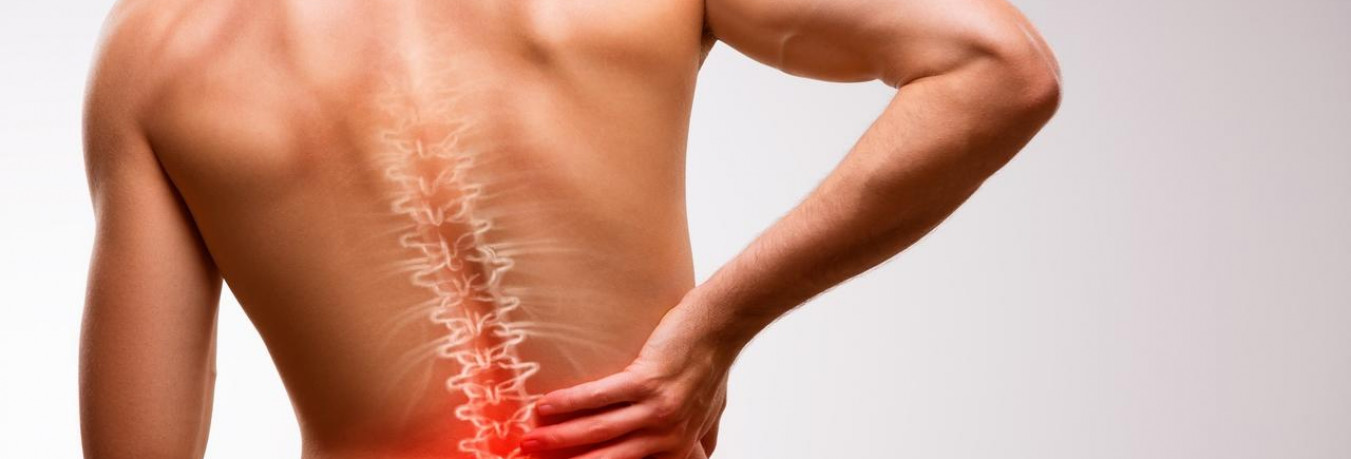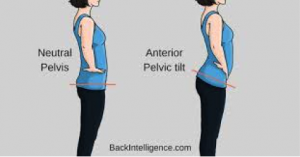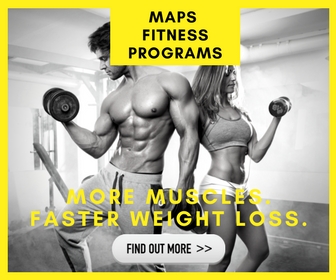
Fix Your Back Pain
Jul 31, 2018 mindpumpConstant, nagging back pain. It sucks. Kills your progress in the gym, and takes away from your life outside it. Lucky for you, fixing back pain isn’t as daunting as it seems.
Usually, it comes from any combination of the following:
- Tight hip flexors
- Poor core stability
- Weakness and/or inability to recruit the glutes
All these add up to what’s referred to as “anterior pelvic tilt” (APT). Basically, back arched forward, butt sticking out. Think of that pose you do for the ‘gram to make your booty look bigger.

That’s the one.
APT usually comes from sitting/sedentary lifestyle/poor posture. These lifestyle factors usually lead to:
-
- Tight hip flexors
- Weak and/or poor mind-muscle connection to glutes and hamstrings
- Quad dominance. The quads (on the front of the legs) do most of the work for the lower body. You become very “quad dominant”.
As the quads and hip flexors get unproportionately stronger/stiffer than the glutes and hamstrings, something called reciprocal inhibition takes places.
Reciprocal inhibition: when muscles on one side of a joint relaxing to accommodate contraction on the other side of that joint.
In this case, the glutes and hamstrings are weak and lengthened due to the opposing muscle groups, the quads and hip flexors, being strong and tight. This causes the pelvis to tilt forward, creating lots of arch in the low back. And also lots of low back pain.
Ok, so enough about the tilt. Let’s get to fixin’.
Stretches
Most of us spend the day seated, which leads to tight hip flexors.
The psoas is the biggest/strongest muscle of the hip flexor. It attaches from the lumbar vertebrae to the femur (from your spine to your leg bone). A tight psoas will constantly pull forward on your spine, contributing to anterior pelvic tilt. This needs to be taken care of ASAP.
Couple different hip flexor stretches:
Beginner:https://www.youtube.com/watch?v=STH1aNooP1w
Advanced:https://www.youtube.com/watch?v=heqIqJvaPak
The cat cow stretch takes the spine through flexion and extension, stretching and mobilizing it.
Cat/cow stretch:https://youtu.be/aBHoZTle2lE?t=218
Stabilization
Core stability:
You can split your core work into two groups.
-
-
- Ab hypertrophy work: lots of people do this. Crunches, knee raises, and the like. Focused on “the burn” and making your abs look good
- Core stability work: Core work with a focus on bracing and anti-rotation. Planks, loaded carries, pallof presses, etc. Less sexy stuff.
-
Having a stable core is a must to prevent back pain. When you can properly activate the muscles around the spine, much less stress is put on the actual spine itself.
A stable core also keeps the spine in the safest position possible when loaded with heavy weights.
Pelvic tilts: These strengthen your abs, help you use the core muscles to push the pelvis into a neutral position. When carried over to movements like squats and deadlifts, the low back is safest in this position.
Pelvic tilts:https://youtu.be/aBHoZTle2lE?t=37
Dead bugs: taking your pelvic tilts to the next level, dead bugs are an excellent way to teach yourself how to move the limbs, all while: a) properly bracing the abs b) keeping the spine and pelvis in the safest position.
Dead bugs:https://www.youtube.com/watch?v=rbemelnkHag
Breathing
Yes, breathing. This is a crazy neglected part of back health.
You need strong core muscles. But to really stabilize the spine, you need the ability to create lots of “intra-abdominal pressure”.
Enter: “the Valsalva maneuver”. Forcefully breathing out against a closed windpipe. (So no air is actually escaping your mouth or nose.)
This technique traps air in your lungs andcreates pressureinside your abdomen, known as “intra-abdominal pressure,” which stabilizes your torso against heavy loads
Picture a plastic water bottle. No lid on, the bottle can easily be crushed. However, with the lid on, the air inside pushes out against the walls of the bottle when you apply pressure, keeping it from being crushed.
This is basically how the Valsalva maneuver works. As you attempt to lift heavy weights, the air trapped in your abdominal cavity helps keep the torso strong and rigid.
Take note: For those at a high risk of cardiovascular problems, performing the Valsalva maneuver can be dangerous.
For more on how to breathe properly when lifting:https://www.youtube.com/watch?time_continue=7&v=Wiv6mtPRims
Glute Activation
Finally, let’s take care of that booty.
Inability to fire the glutes during the “hip hinge” movement pattern is a huge contributor to lower back pain.
The hinge is basically just pushing your hips backwards as you allow the knees to bend, and then returning ‘em forward.
Problem is, if your glutes aren’t firing from the back of your hinge, other muscles are going to take over. Usually it’s your low back muscles that get overloaded by much of the work that your glutes should be doing. And thus we have back pain, strains, etc.
So learning how to fire your glutes when needed is huge.
If you’re super quad dominant, it’s gonna take some work to be able to really activate your booty. Right now, you probably have a hard time “feeling” your glutes in any movement. So let’s take the hip hinge back to its simplest form, the glute bridge.
Be super mindful of the form here. Doing it incorrectly can make back pain worse. Focus on the “push your low back flat to the floor” cue.
Glute bridge:https://www.youtube.com/watch?v=OATtp-DsQxo
Once you have the glute bridge mastered (no low back pain/tightness during movement, glutes burning, minimal hamstring burn) move on to single leg glute bridges.
Single leg glute bridges:https://www.youtube.com/watch?v=yFNjwkUNIao
By the time you can perform ten good reps per leg of a single leg glute bridge (no low back pain/tightness during movement, glutes burning, minimal hamstring burn, hips are kept stable) your glutes are in a good place.
Back pain doesn’t have to be a part of your life forever. Work on these consistently. You’ll be pain-free before ya know it.
Sources:







